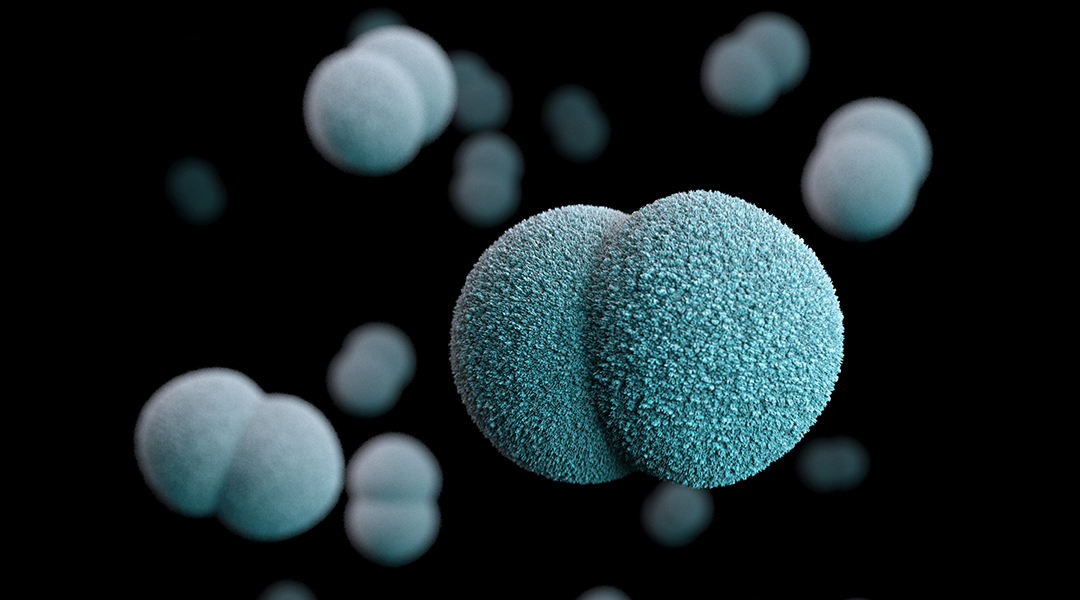Researchers still don’t know exactly how bacteria develop resistance to the antibiotic drugs we use to fight them. What the medical and research community does know is that many species of bacteria are developing resistance to our best drugs at an alarming rate. Furthermore, the pace of development for new drugs is alarmingly slow.
In the race to avoid a plague of resistant bacteria, researchers are mapping a shared set of genes found in resistant bacteria called the antibiotic resistome. This collection of genes are associated with a bacteria’s ability to resist antibiotics. These genes are found throughout the bacterial world — in microbes living in humans and animals, in the environment, even on the surfaces of the buildings we inhabit. A set of these genes was even found in 30000-year-old frozen soil.
To understand how these genes help bacteria evade antibiotics and attempt to control their spread, Haifeng Qian, professor from the College of Environment at Zhejiang University of Technology in China, undertook one of the most comprehensive efforts to map the global resistome to date.
The results of this analysis were published in Advanced Science and was one of the largest attempts to visualize how these genes are distributed across the globe to begin piecing together how they are spreading and evolving.
How the resistome spreads and changes
Two factors largely influence which resistance genes are prevalent where. In humans, Qian explained, the resistome is different between individuals because of their various antibiotic intakes, diets, gender, ages, and living environments, among other factors.
Environmental factors may also determine how resistance is spread, and knowing which bacterial genes are more prevalent under certain conditions gives clues to their function and risk level. Unfortunately for us, bacteria are unique in the animal kingdom for their ability to transfer genetic material.
This is because bacteria have genes made up of DNA, just like mammals, but unlike mammals, who only pass on genes to offspring during sexual reproduction, bacteria can exchange genetic material directly with one another, allowing for the rapid transmission of genes that help them survive.
“The ‘horizontal’ gene transfer mechanism is one of the key mechanisms for the spread of resistance genes between bacteria,” said Qian. Horizontal gene transfer is the name for three specific methods bacteria use to swap genes.
In short, bacteria pick up genetic material from their environment and incorporate it into their genomes, they pass genetic material directly between each other, and viruses that infect bacteria carry genes between them. This means that just about anywhere bacteria live — which is everywhere — they are swapping genes.
Mapping the resistome
To get a more complete picture of this global exchange, Qian and his team undertook a massive analysis, comparing genetic material recovered from human fecal samples, animals, invertebrates, plants, air, soil, water, buildings, sewage treatment plants, subways and more, from 23 countries and five continents.
The results single out humans as the potential hub for antibiotic resistance gene spread. “We found that nearly 85% of the resistance genes in external habitats overlapped with those in humans,” he said, adding that, “the human resistome broadly represents the global resistome and may be the hub of resistance gene transmission.”
Given the propensity of humans to travel and our colonization of the entire planet, this result is perhaps not surprising, but another factor, said Qian, is our overuse of antibiotics. “The abuse of antibiotics is driving the global fusion of the resistome,” he said. “Future resistance control should focus on transmission mechanisms and risks in external habitats.”
The analysis also revealed the riskiest external habitats. “Building habitats, especially the sewage treatment plants and subways contained a higher abundance of [antibiotic risk genes] and pathogens, presenting a higher health risk to humans,” said Qian. To help protect ourselves and others, Qian suggests people using and working in contaminated environments, like hospitals, livestock farms, and sewage treatment facilities, take precautions to reduce exposure and increase hygiene.
The group intends to now focus on some of these high-risk areas and use the methods and approach crafted here to track the resistome and its changes over time, and between highly contaminated areas.
“Understanding the transmission mode, pathway and mechanism of resistance genes will help us to formulate corresponding prevention methods,” said Qian.
Reference: Qi Zhang, et al. Metagenomic insight into the global dissemination of the antibiotic resistome, Advanced Science (2023), DOI: 10.1002/advs.202303925
Feature image credit: The CDC on Unsplash

















